You’ve probably never heard of Isaac Calvin Garber, better known on various cornerstones and building plaques around the state as I.C. Garber. But if you’ve been to Jackson or Laurel or dozens of other places around the state; attended Mississippi College, Southern Miss, Ole Miss, MSU, Belhaven College, or even All Saints Episcopal School in Vicksburg; or if you’ve been around this blog for a while I guarantee you’ve seen his work. Mississippi historian and first MDAH director Dunbar Rowland took notice of “the largest building contractor in the state” in his 1925 History of Mississippi: The Heart of the South, where he included a lengthy biography and list of buildings for Mr. Garber. Garber’s career continued into the late 1930s, when he was in business with his son as “I.C. Garber & Son.” In addition to Rowland’s list, MDAH has a longer list broken down into the various phases of Garber’s career–check it out to see what Garber buildings you have near you–I’ll bet there’s at least one–and make a field trip!
Here’s what Dunbar Rowland had to say:
ISAAC CALVIN GARBER
To be known as the largest building contractor in the state of Mississippi is a business achievement to warrant pride on the part of any man; to have attained such distinction while still in the forties is reason enough to intensify this pride. If Isaac Calvin Garber of Jackson, Hinds county, Mississippi, occasionally indulges in such a feeling, he keeps it carefully concealed from the gaze of all beholders. Business, and there is plenty of it, keeps him too busy to permit contemplation of what is passed. During the year 1923 Mr. Garber erected over three-fourths of a million dollars worth of buildings with apparently the same ease that the average building contractor erects a ten-thousand-dollar structure. He is now erecting a Masonic Temple in Jackson that will cost four hundred thousand dollars, and has many other high-class buildings under way or projected. “A builder who builds”, [sic] is a slogan some word juggler once evolved for describing Mr. Garber, and it fits him to a nicety. A few years ago the Jackson Daily News, in a long article on Mr. Garber, from which what follows is an excerpt, said:
“Not only is Mr. Garber a builder who builds, but he has erected more building than any man in Mississippi during the past decade. . . . In fact, Mississippi’s foremost contractor is yet a young man, just in the prime of life, and it can be predicted with confidence that he is merely at the beginning of his building career in the old Magnolia state. He was born in the mountains of Tennessee in 1871, being only in his forty-fourth year, and you would travel a long distance to find a more perfect type of the self-made man. At the tender age of thirteen, when the average boy has no realization whatever of the cares and responsibilities of life, he was working at the carpenter’s trade, and before he had attained his majority he had become skilled in all branches of that trade. For ten years he was with the Knoxville Construction Company, supervising construction work at various points in the south, and acquiring a thorough knowledge of every phase of the building industry.”
Isaac Calvin Garber was born near Jonesboro, Washington county, Tennessee, on April 12, 1871, the son of L.C. and Lucrecia W. (Hoss) Garber, both parents being natives of Tennessee and both now living in Jonesboro in the Big Bend state. His education was obtained solely in the county schools, and his ambition to be at work made him cut his attendance to the shortest time possible. Until 1903 Mr. Garber worked for others, but in that year he decided to embark in business for himself and chose Jackson as the most desirable city in which to begin operations. He won instance recognition, and since that time has established a reputation for skill, honesty and reliability as a contractor that has proved to be a greater asset than any amount of capital could confer.
In his political views Mr. Garber is a democrat, but has never taken an active part in political matters. Fraternally he is affiliated with the Masonic order, being a Knights Templar, a Thirty-second Degree Scottish Rite Mason, and also a Noble of the Mystic Shrine. He is also a member of the Knights of Pythias and the Woodmen of the World. He belongs to the Jackson Rotary and Shrine Clubs, and in his religious convictions is a member of the Baptist church.
On October 5, 1899, in Meridian, Mississippi, Mr. Garber was married to mis Ida Barron, daughter of Jesse and Martha (Bacon) Barron, both parents being natives of Tennessee. Both died some years ago. Four children have been born to Mr. and Mrs. Garber: J. Hood, born in 1900; I.C., Jr., born in 1904; Valerie, born in 1907; and Velva, born in 1909.
Among the notable structures that have been constructed by Mr. Garber are the following: Dining hall, Science hall, Library building, Ratliff hall and Jennings hall, all for Mississippi College at Clinton, Mississippi; All Saints College, Vicksburg, Mississippi; Administration buildings of Millsaps College and Jackson College, Jackson, Mississippi; Girls dormitory and boys dormitory, school building, Dining hall, Power house, President’s residence, Cottage “B,” all for the Mississippi State Normal School at Hattiesburg, Mississippi; Mississippi Home Telephone Exchange, Clarion-Ledger building, Jackson Public Library, Mississippi Baptist Hospital, all at Jackson, Mississippi; Lemon Hotel, at Jackson; Pinehurst Hotel, at Laurel, Mississippi; West Capitol Street Methodist church, Galloway Memorial Methodist church, Second Baptist church,
Seventh Day Adventists’ church, all at Jackson, Mississippi; St. John’s Episcopal church, Laurel, Mississippi; Episcopal church, Winona, Mississippi; M.E. church, South, Columbia, Mississippi; and the Baptist church at Flora, Mississippi; Deaf and Dumb Institute, at Jackson; and hundreds of beautiful homes throughout Mississippi and other southern states.
Dunbar Rowland, History of Mississippi: Heart of the South, Vol. IV. Chicago, Jackson: S.J. Clarke Publishing Co., 1925, pp. 432-433.
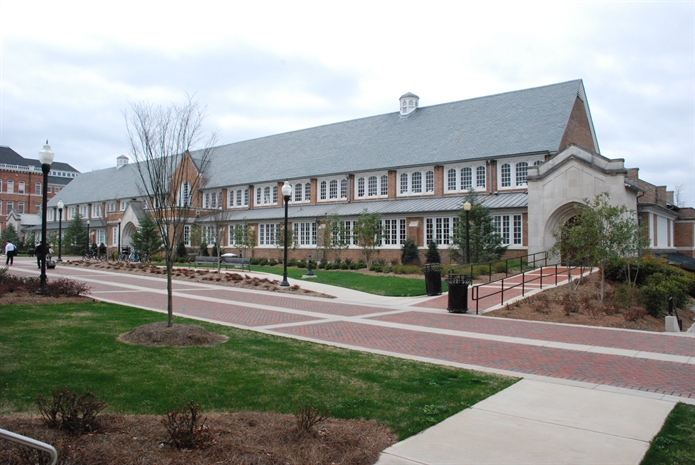
Perry Cafeteria, MSU (1921, Link & Trueblood, archts., I.C. Garber, builder). Photo 3-17-2010 by Jennifer Baughn, MDAH. Retrieved from MDAH Historic Resources Database 7-17-2012.
Categories: Architectural Research, Cool Old Places, Jackson, Laurel

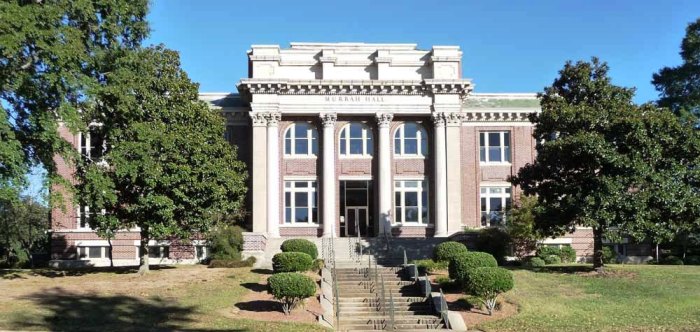
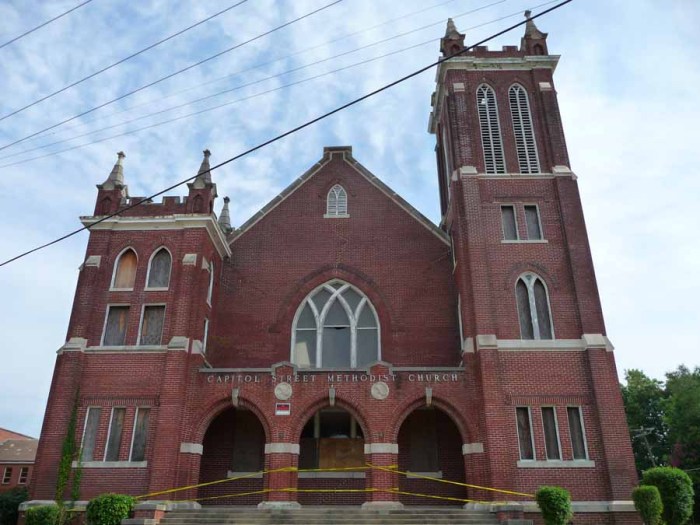
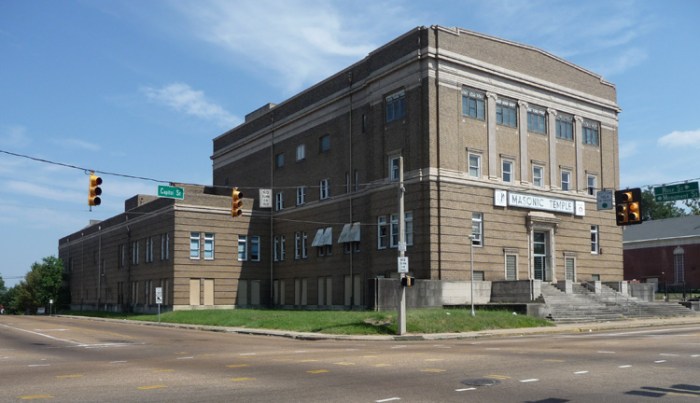
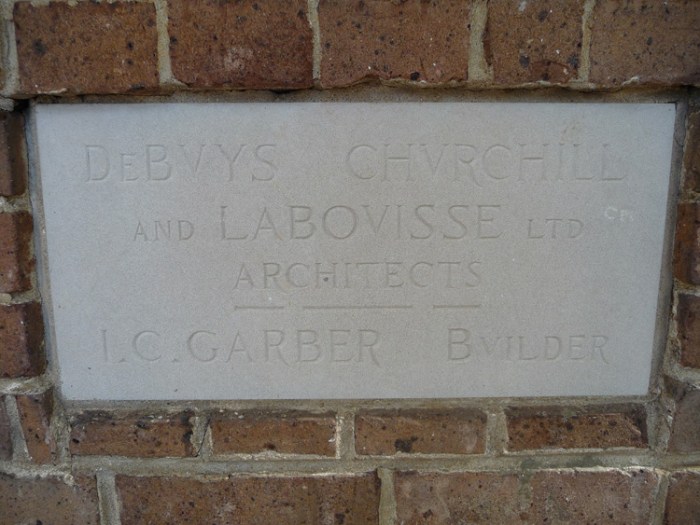
The photo captions are almost unreadable being dark grey on navy blue background (at least on my monitor). Click and dragging highlights the captions so that my old blind eyes can read them. HOWEVER, WONDERFUL AND VERY INTERESTING ARTICLE! THANK YOU!
LikeLike
Really? When did this start? There shouldn’t be a blue background anywhere.
LikeLike
Calvary Baptist Church, 1300 West Captoll Street in Jackson, Mississippi is another building that Mr. Garbar was the contractor for in 1927 until the completion in 1929. Calvary has worship severices every Sunday morning at 10:45. The interior of the beautiful sanctuary is breath taking. The sanctuary windows are filled with symbolism of Christain faith. The baptistry is also designed with icons relating to the Bible. A must see of fine Greek architecture is wonderful history lesson in Chirstian faith as well as in the arts.
LikeLike